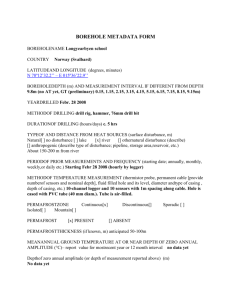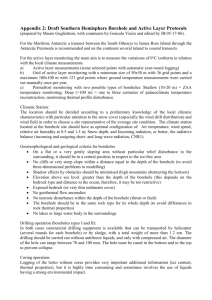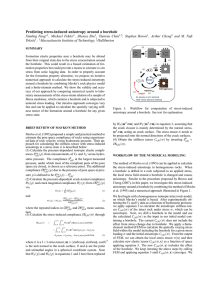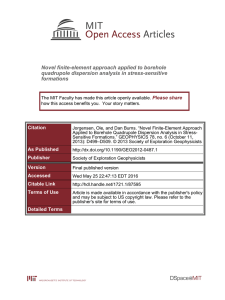Doorstopper
advertisement
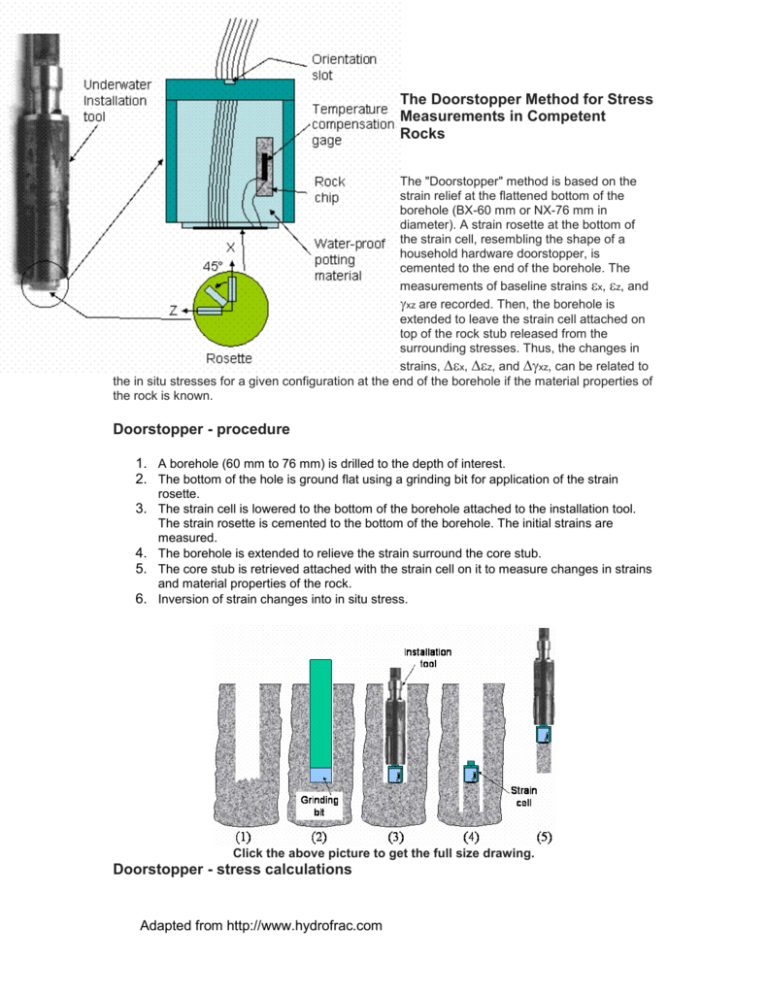
The Doorstopper Method for Stress Measurements in Competent Rocks The "Doorstopper" method is based on the strain relief at the flattened bottom of the borehole (BX-60 mm or NX-76 mm in diameter). A strain rosette at the bottom of the strain cell, resembling the shape of a household hardware doorstopper, is cemented to the end of the borehole. The measurements of baseline strains x, z, and xz are recorded. Then, the borehole is extended to leave the strain cell attached on top of the rock stub released from the surrounding stresses. Thus, the changes in strains, x, z, and xz, can be related to the in situ stresses for a given configuration at the end of the borehole if the material properties of the rock is known. Doorstopper - procedure 1. A borehole (60 mm to 76 mm) is drilled to the depth of interest. 2. The bottom of the hole is ground flat using a grinding bit for application of the strain rosette. 3. The strain cell is lowered to the bottom of the borehole attached to the installation tool. The strain rosette is cemented to the bottom of the borehole. The initial strains are measured. 4. The borehole is extended to relieve the strain surround the core stub. 5. The core stub is retrieved attached with the strain cell on it to measure changes in strains and material properties of the rock. 6. Inversion of strain changes into in situ stress. Click the above picture to get the full size drawing. Doorstopper - stress calculations Adapted from http://www.hydrofrac.com If the borehole is oriented in 0y direction and the xz plane is perpendicular to the borehole, the strain measurements (a, b and c) can be converted into the stresses. For a 45 degree rosette shown in the above picture, the strains in the rosette can be transformed into the stains in the X-Z orthogonal coordinate system. If the rock surrounding the borehole is assumed to behave in a linear elastic manner, the strains can be converted into the changes of stresses at the flat bottom of the borehole. The elastic moduli E and are measured from the extracted core stub. The geometry at the flat bottom of the borehole with extended overcore requires a numerical analysis to convert the changes in stresses into the in situ stress surrounding the borehole. If the stress y along the borehole direction is assumed to be zero for a shallow borehole or calculated from the weight of the overburden, the in situ stress acting in the plane perpendicular to the borehole is as follows: The numerically obtained coefficients a, b, c, and d are as follows: References a b c d Bonnechere, 1968 1.25 0 0.75(0.5+) 1.25 Van Heerden, 1968 1.25 0.064 0.75(0.65+) 1.25 0 0.81(0.565+) Crouch, 1969 de la Cruz & Raleigh, 1972 1.351.55^2 1.3 Adapted from http://www.hydrofrac.com 0.085+0.15^2 0.473+0.91 1.4230.027





